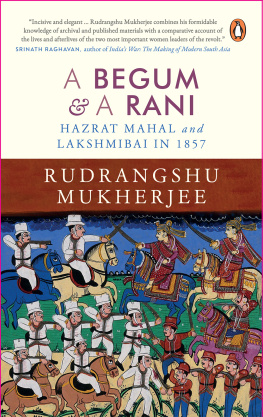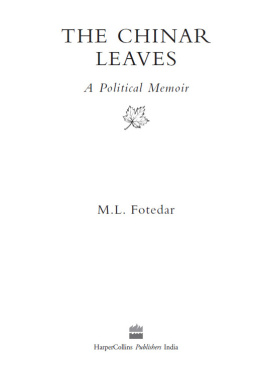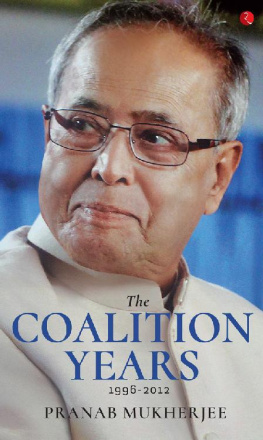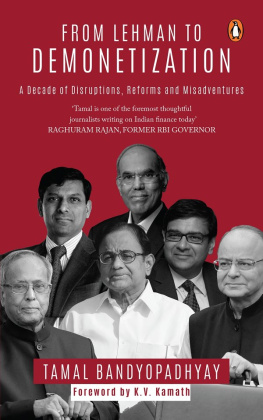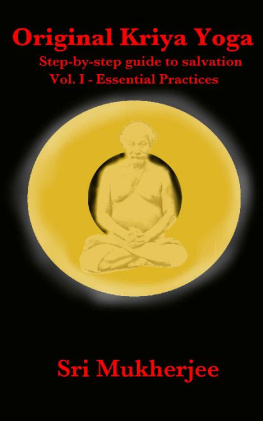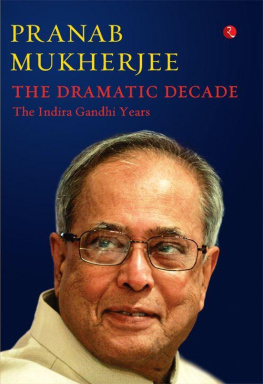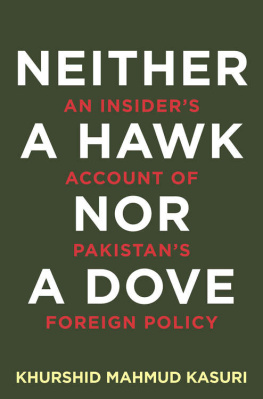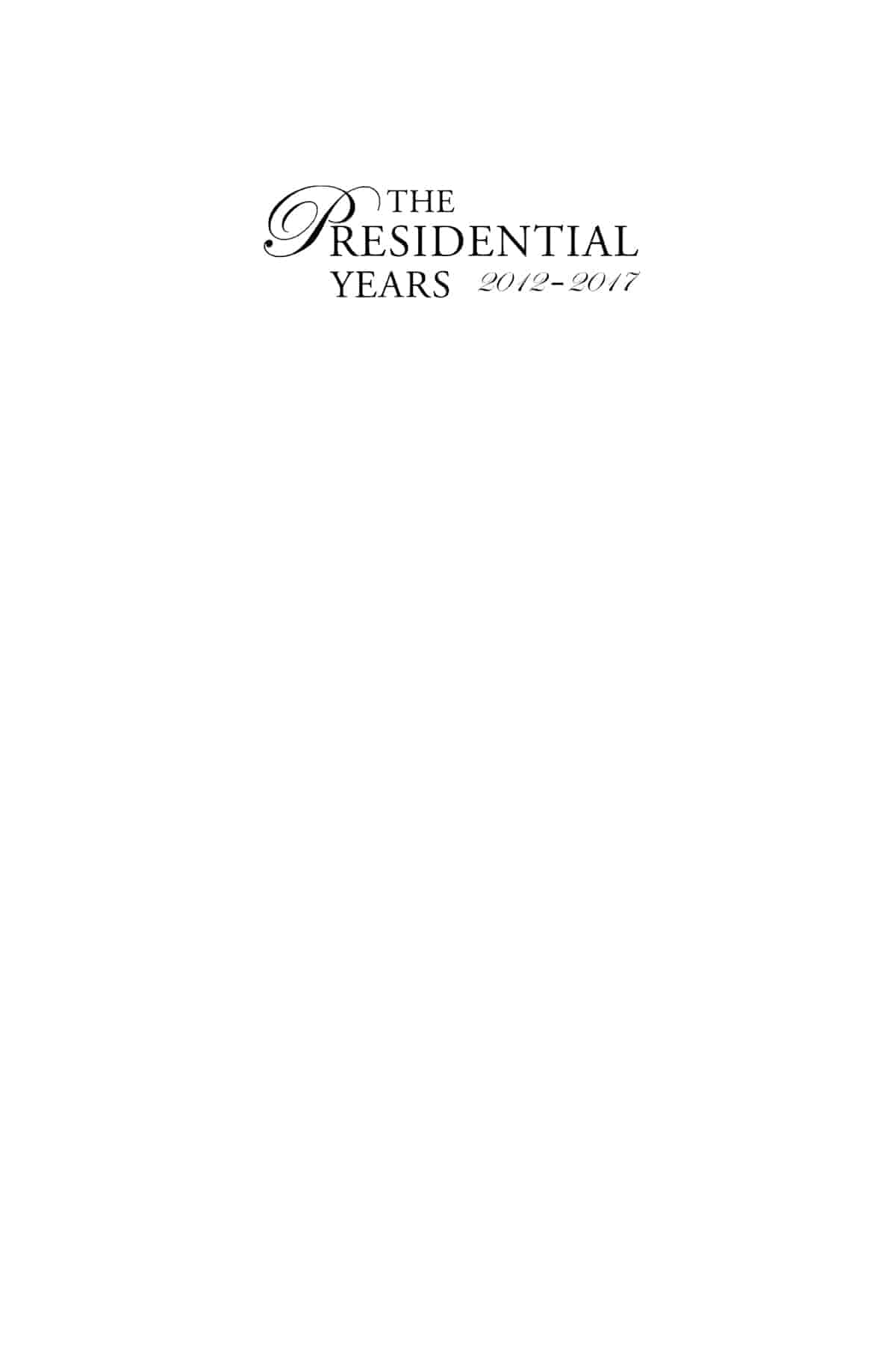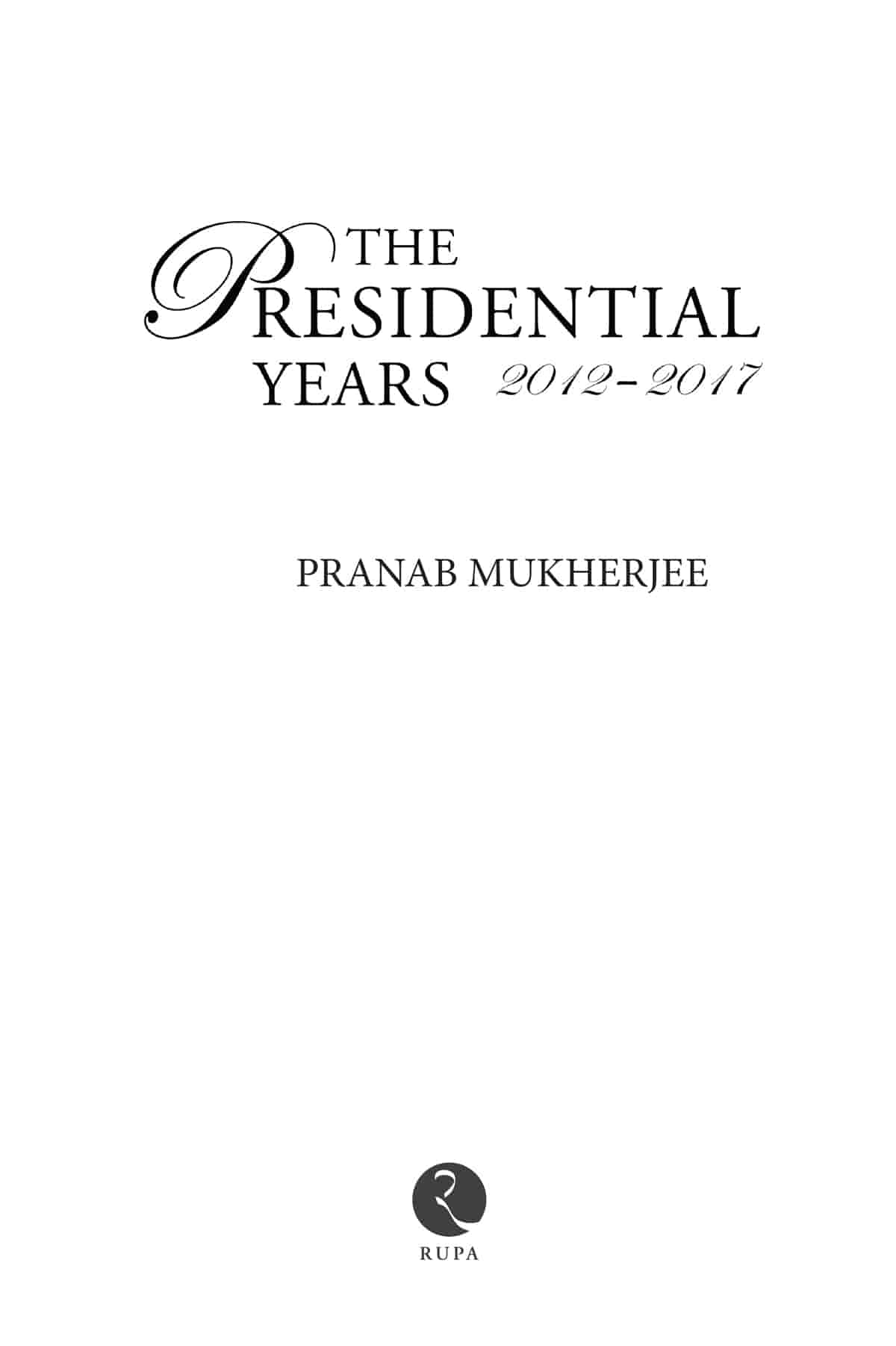Other books by the author
Beyond Survival: Emerging Dimensions of Indian Economy (1984)
Off the Track (1987)
Saga of Struggle and Sacrifice (1992)
Challenges Before the Nation (1992)
Thoughts and Reflections (2014)
The Dramatic Decade: The Indira Gandhi Years (2014)
The Turbulent Years (2016)
The Coalition Years (2017)
Published by
Rupa Publications India Pvt. Ltd 2021
7/16, Ansari Road, Daryaganj
New Delhi 110002
Copyright Pranab Mukherjee 2021
Photos copyright: RB-Photo
The views and opinions expressed in this book are the authors own and the facts are as reported by him which have been verified to the extent possible, and the publishers are not in any way liable for the same.
All rights reserved.
No part of this publication may be reproduced, transmitted, or stored in a retrieval system, in any form or by any means, electronic, mechanical, photocopying, recording or otherwise, without the prior permission of the publisher.
ISBN: 978-93-90356-35-5
First impression 2021
The moral right of the author has been asserted.
This book is sold subject to the condition that it shall not, by way of trade or otherwise, be lent, resold, hired out, or otherwise circulated, without the publishers prior consent, in any form of binding or cover other than that in which it is published.
INTRODUCTION
T he year was 2012. Monsoon had reached India, caressing most parts of the country. The southern and western parts of the country were, of course, awash with it. But on that day25 Julyneither the clouds nor the rain had deigned to cast their benevolent glance on Delhi. It was hot and sultry. I remember it vividly because it was a momentous moment for me. It was on this day that I took oath as the 13th President of the Republic of India. And, while I was fully dressed for the occasion, in a black achkan and white churidar, it wasnt what I would have wished to wear on an ordinary humid day.
The ceremony began with the arrival from Rashtrapati Bhavan of the outgoing President Pratibha Devisingh Patil and me at the Parliament House, where I was greeted warmly by Vice President Hamid Ansari, and Chief Justice of India (CJI) S.H. Kapadia. I was then escorted to the Central Hall, which has witnessed many watershed moments in the countrys political history. It was here that the Constituent Assembly had met for years to discuss and deliberate on the future of free India. It was here that the Constitution of India was debated and adopted by stalwarts, all of them iconic figures, who were members of the Constituent Assembly. And it is in the Central Hall that joint sessions of Parliament are held and where the president addresses both the Houses, usually during the first sitting of Parliament in the year, or the first sitting of Parliament after a new government takes over at the Centre.
The air-conditioning at the packed-to-capacity Central Hall of Parliament and the slow whirring of fans in addition, offered the much-needed relief from the sultry weather. A large gathering of dignitaries, including Prime Minister (PM) Dr Manmohan Singh, Lok Sabha Speaker Meira Kumar, United Progressive Alliance (UPA) Chairperson Sonia Gandhi, union ministers, governors and prominent opposition party leaders, was in attendance to witness the ceremony, as I stood to take oath, administered by the CJI. It was a short one, as per tradition:
I, Pranab Mukherjee, do swear in the name of God that I will faithfully execute the office of President of the Republic of India, and will to the best of my ability preserve, protect and defend the Constitution and the law, and that I will devote myself to the service and well-being of the people of the Republic of India.
I felt goosebumps as I read the lines that administered me the oath. I would now be following in the footsteps of my illustrious predecessors such as Dr Rajendra Prasad, Dr S. Radhakrishnan, Dr Zakir Husain and Dr A.P.J. Abdul Kalam, among others. I had to live up to both the dignity of the office I was assuming and the legacy of the stellar work that the other occupants of Rashtrapati Bhavan had left behind.
The ceremony was marked by pomp and grandeur. It was something to which I was no stranger, having been part of gatherings on a few occasions previously when presidents took the oath of office. Nonetheless, the experience of being at the centre stage of the event was unique and left me overwhelmed. A 21-gun salute announced the swearing-in of the new president. This was followed by a thunderous applause and thumping of desks from the dignitaries when I signed the oath register.
Once the formalities inside the Parliament building were over, my immediate predecessor and I were led out of the Central Hall amid the roll of drums and the blowing of trumpets. The outgoing president and her husband, Dr Devisingh Ransingh Shekhawat, were among the many who congratulated me and wished me well in my new assignment.
Back at Rashtrapati Bhavan, I inspected a tri-services guard of honour and then escorted Pratibha Patil to her residence at 2, Tughlaq Lane.
The ceremony done, I walked into my study in the sprawling and magnificent Rashtrapati Bhavan. Like the Central Hall, Rashtrapati Bhavan too is steeped in history, made deeper by the illustrious occupants of the past. It was not the first time that I was visiting the grand residence; I had been there on various occasions in connection with a number of official engagements and missions for my erstwhile party, the Congress, and on social occasions hosted by the president of the day. But again, given the fact that I was now the occupant of Rashtrapati Bhavan as the head of state and would be the host on numerous occasions in the coming years, the feeling was very different from that of the past. From the hurly-burly of an extremely busy life of an active politician to the life of leisure as many termed it, I wondered how I would adapt to the challenges that lurked round the corner, and how I would meet them. Of course, it was still too early to lose sleep over those thoughts, and yet the legacies that surrounded the magnificent building could not be forgotten. I just could not afford to fail to live up to those expectations.
From where I stood behind my desk, the view from the window of the study, as the Presidents office is called, was that of the magnificent Mughal Gardens, often regarded as the soul of the Presidential Palace. The main garden is divided into a grid of squares by two channels running north to south, and two more running from west to east. Lotus-shaped fountains that throw up water to a height of 12 feet, adorn the crossings of these channels. There are two huge lawns, one square and the other oblong. Lush green grass covers the lawns and it takes a great deal of effort and expertise, as I was to learn, to maintain the green carpet. Various trees, common and exotic, make up the gardens, as do a large variety of flowers including tulips and over a hundred varieties of roses. It is a place I soon fell in love with and spent as much time as I could, taking leisurely walks or while contemplating important matters of the state. I am happy that people have an opportunity to visit it when the garden opens up for the public once a year in winters when the flowers are in full bloom.


